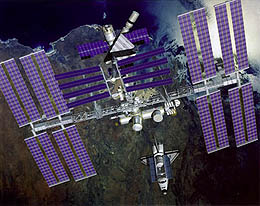On December 1, 1987, NASA selects Boeing to be the prime contractor for design and construction of the science and living modules for the International Space Station. Boeing beats Martin Marietta for the honor, and is later designated overall prime contractor for the largest manned space project since the Apollo moon landing.
The United States space station program has a long and troubled history. Originally conceived as the next step in space after Apollo, the program was gutted by the Nixon Administration. Only the Space Shuttle survived, but without its original mission of servicing an orbital habitat. President Reagan revived the station in 1984. The Soviet Union began assembly of its own station, Mir, two years later, which made completion of an "International" (but mostly American) station a matter of national pride.
Boeing was selected for a design competition with Georgia-based Martin Marietta on March 14, 1985, and prevailed three years later. The Soviet Union was recruited into the project, but its collapse in 1990 caused long delays. Originally budgeted at $11 billion, the price of the station quickly soared while the hardware went nowhere.
Boeing was selected as the station's prime contractor on August 17, 1993. The first elements of the station were orbited by Russia in 1998. Launch of the Boeing science module in 2001 marked a major milestone in fulfilling the orbital laboratory's mission as a permanent outpost in space.

